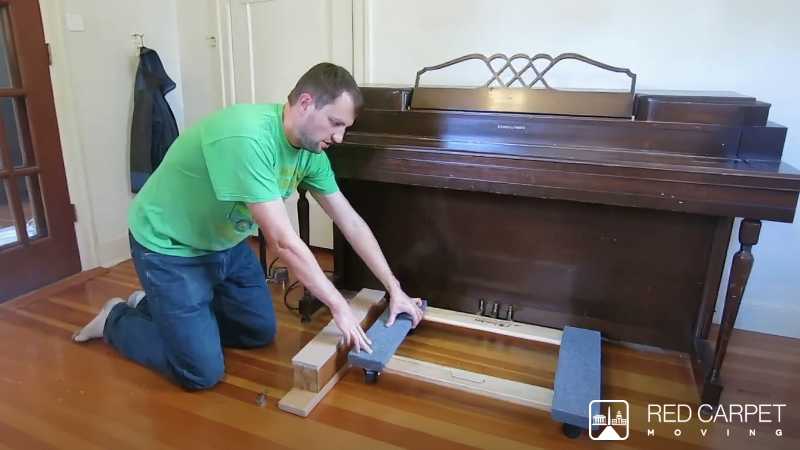A piano, with its intricate construction, has numerous moving parts that can be easily affected by external factors. The piano’s action mechanism, consisting of hammers, dampers and other moving parts, relies on precision, making it sensitive to rough handling or misuse.
The wooden components, including the soundboard, bridges and keys, are prone to warping or cracking, particularly in response to changes in humidity and temperature. Felt components, used in hammers and dampers, may also wear out over time, impacting the piano’s tone and responsiveness.
Additionally, the metal frame and tuning pins, providing structural support, can be compromised by undue stress or impact. Recognizing and addressing the delicateness of piano parts is essential for maintaining the instrument’s longevity and optimal performance.
This understanding will make people think thoroughly when considering moving a piano, even with professional movers, because external factors can influence the instrument’s sound quality.
For example, rough handling during transportation can cause the piano’s strings to shift, affecting their tension and resulting in a pitch change. Sudden jolts or impacts may lead to detuning, where the strings go out of tune. The piano’s soundboard, a crucial component for resonance, can be sensitive to changes in position or shape, which can affect the instrument’s overall sound quality.
Short moves might not immediately disrupt its harmonies, but the susceptibility to climate variations necessitates a thoughtful approach. Acknowledging the relationship between the piano’s internal delicacy and external environmental factors is fundamental to preserving both its tonal excellence and tuning stability.
When a piano is moved, especially over longer distances or between different locations, it is exposed to variations in temperature and humidity. These changes can impact the wooden and metal components of the piano, causing them to expand or contract. As a result, the tension in the piano strings may be altered, leading to a shift in pitch and tuning.
Need for piano tuning after moving
It is crucial to tune a piano after moving, but only some understand why or when. If a piano is moved within the same room or between rooms with care, tuning is usually unnecessary. However, owners should listen for any noticeable changes in sound after the move to determine if tuning is necessary.
Tuning becomes necessary when the piano is moved between buildings. Longer transports increase exposure to these climate changes. The carefulness of movers also plays a role, as jolts during transportation can lead to detuning.
Having the piano tuned post-move allows the technician to ensure proper reassembly. Movers occasionally fail to reassemble pedals correctly, causing issues. Opting for professional piano movers reduces the risk of improper reassembly.
After moving, it is better to let the piano acclimate to its new environment for at least two weeks before tuning. Failing to do so may result in the piano quickly going out of tune, rendering the tuning effort and expense ineffective.
Tuning pins plays a crucial role in maintaining proper string tension. If these pins slip out of place, the affected strings quickly go flat after tuning. In such cases, the piano requires more than just tuning; it needs minor repairs to address the tuning pin slips.
A specialized piano tuner can adjust the tuning pins to ensure each string has the right tension, restoring the instrument to its original sound. Experts recommend tuning pianos at least four times in the first year of ownership and, after that, twice a year to prevent complications from leaving a piano unserviced for too long.


